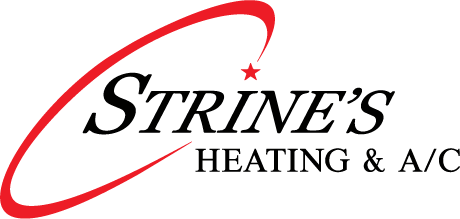
You shouldn’t have to compromise on comfort or empty your wallet to keep your residence at the right temp during summer weather.
But what is the best temperature, exactly? We review recommendations from energy professionals so you can find the best temp for your residence.
Here’s what we advise for the most energy-efficient setting for air conditioning in York.
Recommended Thermostat Settings for Summer
Most households find setting the thermostat at 72-73 degrees is ideal. However, if there’s a sizeable difference between your inside and outdoor temps, your electrical bills will be greater.
This is our advice based on the U.S. Department of Energy (DOE) and ENERGY STAR®.
While at home: 78 degrees. While that seems warm, there are ways you can keep your home cool without having the air conditioner going all the time.
Keeping windows and curtains closed during the day keeps cold air where it needs to be—inside. Some window solutions, like honeycomb shades or plantation shutters, are made to deliver more insulation and improved energy savings.
If you have ceiling fans in your home, the DOE says you can raise thermostat temperatures about 4 degrees warmer without giving up comfort. That’s because they refresh with a windchill effect. Because they cool people, not rooms, turn them off when you move from a room.
If 78 degrees still seems too hot initially, try running an experiment for a week or so. Start by increasing your temperature to 78 degrees while you’re at your residence. Then, gradually lower it while using the tips above. You might be amazed at how comfortable you feel at a warmer temperature setting.
While away: 88 degrees. There’s no need to keep the air conditioner going all day while your home is empty. Moving the setting 7–10 degrees hotter can save you as much as 5–15% on your air conditioning costs, according to the DOE.
When you get home, don’t be tempted to set your thermostat colder than 78 to cool your house faster. This isn’t productive and often leads to a higher AC bill.
A programmable thermostat is a good way to keep your temp in check, but you have to set programs. If you don’t set programs, you run the risk of forgetting to change the set temperature when you take off.
If you want a convenient resolution, consider getting a smart thermostat. This thermostat works with with your phone, so it knows when you’re at home and when you’re gone. Then it automatically modifies temperature settings for maximum savings. How much exactly? About $180 annually on heating and cooling, according to ENERGY STAR.
Another advantage of getting a smart thermostat? You can use your phone to monitor and adjust temperature settings from just about anywhere.
While sleeping: Around 70 degrees. While ENERGY STAR suggests 82 degrees, that could be unbearable for the majority of families. The majority of people sleep better when their bedroom is chilled, so that’s why the National Sleep Foundation recommends 60–67 degrees. But that may be too cool, based on your pajama and blanket preference.
We suggest running an equivalent test over a week, putting your temperature higher and slowly decreasing it to pinpoint the best temp for your family. On mild nights, you could find keeping windows open at night and using a ceiling fan is a better option than using the air conditioning.
More Ways to Use Less Energy During Hot Weather
There are other ways you can conserve money on energy bills throughout hot weather.
- Buy an energy-efficient cooling system. Central air conditioners only work for about 12–15 years and get less efficient as they get older. A new air conditioner can keep your home comfier while keeping electricity expenses down.
- Schedule yearly air conditioner maintenance. Regular air conditioner maintenance keeps your system running smoothly and could help it work at better efficiency. It may also help prolong its life span, since it helps professionals to spot small troubles before they cause a major meltdown.
- Replace air filters often. Use manufacturer instructions for switching your air filter. A clogged filter can result in your system short cycling, or run too often, and drive up your utility.
- Inspect attic insulation levels. Almost 90% of houses in the U.S. don’t have proper insulation, according to the Insulation Institute. Most southern climates need 13–14” of attic insulation, while northern climates need 16–18”.
- Have your ductwork checked. Ductwork that has loosened over time can let conditioned air into your attic, walls or crawl space. This can result in huge comfort troubles in your residence, such as hot and cold spots.
- Seal holes, doors and windows. Keep hot air where it should be by plugging holes. You can also caulk or weather strip doors to keep more cool air indoors.
Save More Energy During Hot Weather with Strine's
If you are looking to conserve more energy this summer, our Strine's experts can help. Get in touch with us at 717-383-4479 or contact us online for additional info about our energy-saving cooling options.
